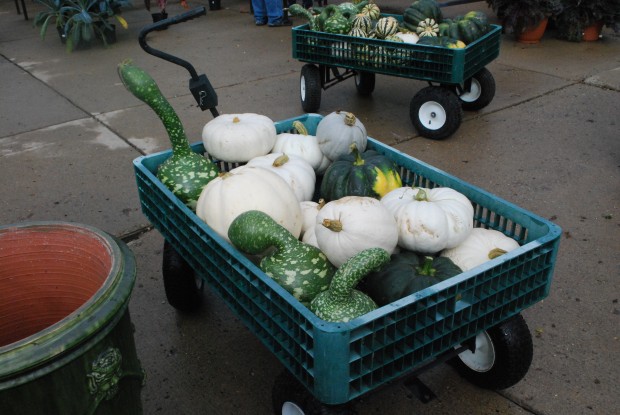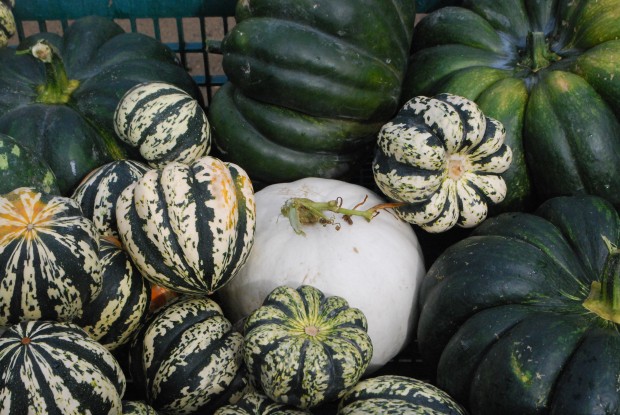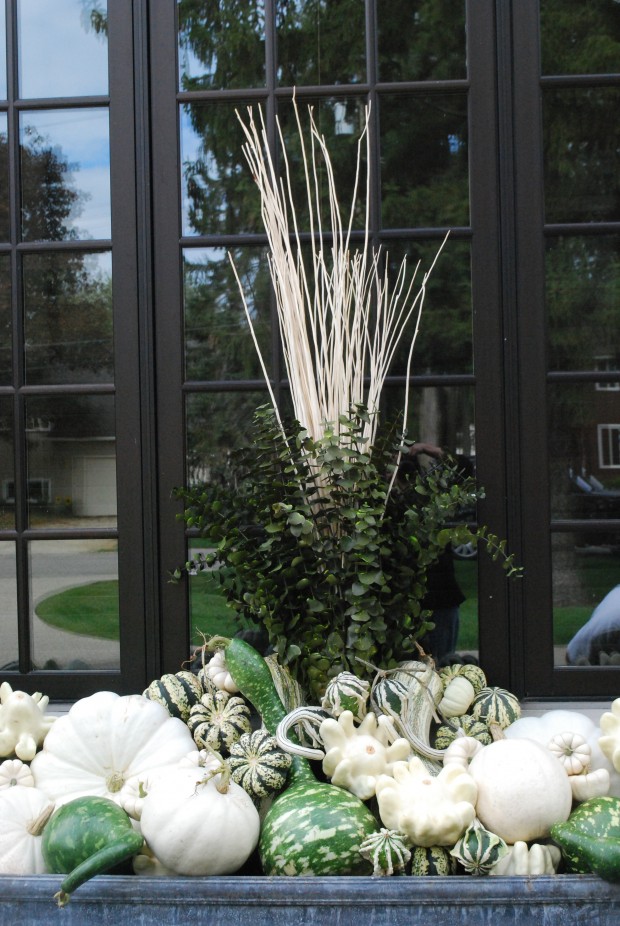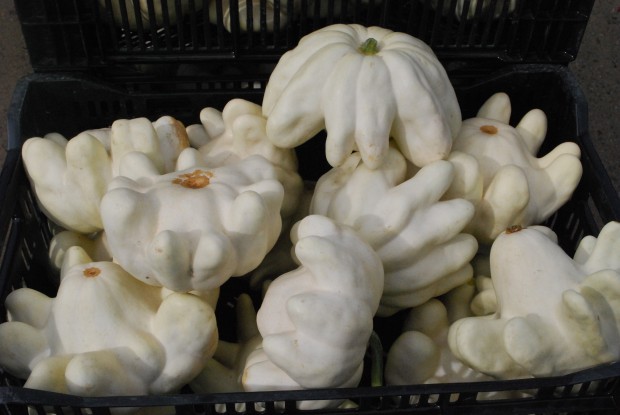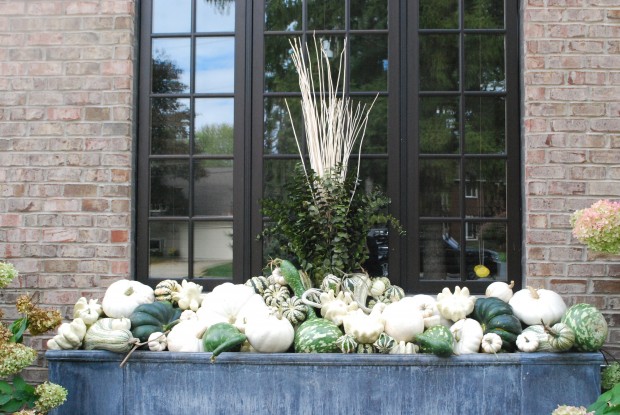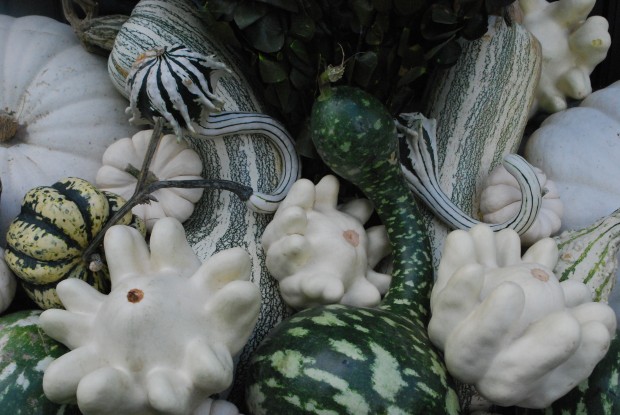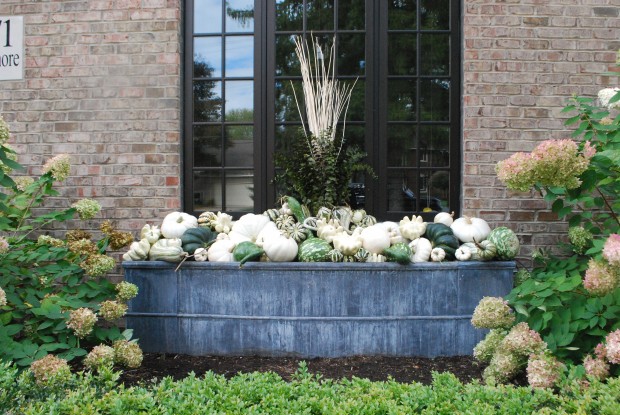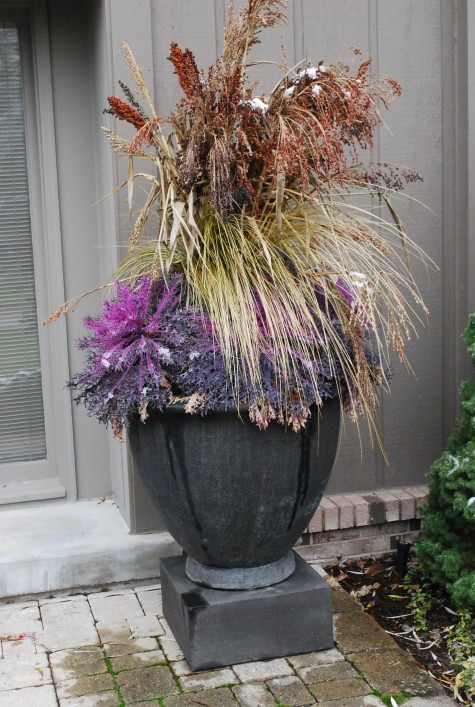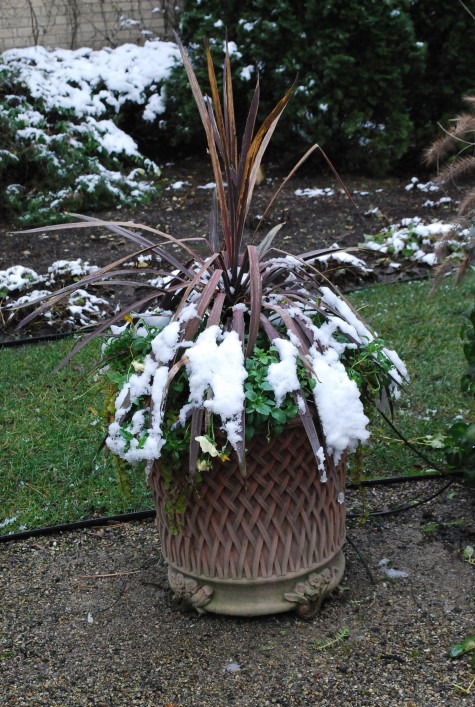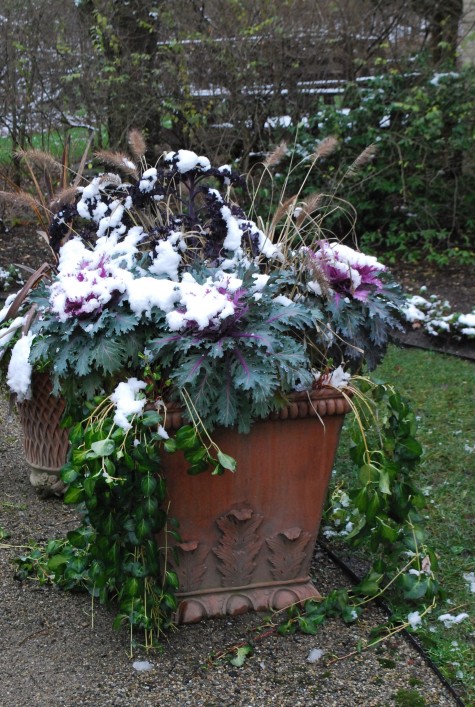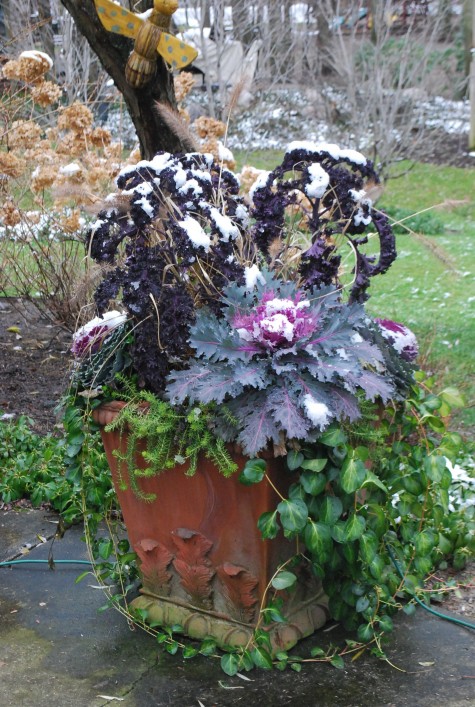Classic-this word suggests those design details that withstand the passage of time. A classic suit, a classic black dress, a classic room- each is timeless. Satisfying and visually meaningful , no matter the era. A landscape design that is classic gives no hint of its age or period. These extraordinary designs in no way reflects a trend, or popular opinion. They just are, on their own, in spite of the passage of years or the whim of popular opinion, extraordinary.
The gardening trends that turned my head over the past 35 years are many-that story if of not so much interest to you, or to me. But some gestures are classic. Worth going back to again and again. Green and white-this color scheme is a garden classic.
Green and white has a history of expression in the landscape that knows no bounds. White flowers nestled into a green landscape-Sissinghurst, in a word. A white garden-timeless. Green and white awnings-a classic expression that can be interpreted in an entirely contemporary way. Green and white is a simple, maybe obvious decision for a landscape or a garden room, but it is a classic one.
I am attracted to color. Bright color. Saturated color. Like a moth to the brightly colored light-that would be me. But I am appreciative of those classic garden gestures that rely solely on green and white. There are lots of shades of green. White in the garden has a wide range-from cream to bright white. Green describes no end of colors-from lime to blue-green. A good garden pays much attention to the greens of the foliage, as the flowers are so ephemeral and short lived. I admire any designer who works with an eye for color.
The fall season features the colors traditionally associated with the harvest. Orange, yellow and cream. The drying leaves are taupe, and brown. The kales and cabbages are dark purple, and turquoise. The pansies are cream yellow, and strikingly intense yellow. Pansies are available in blue, lavender, and rose. Fiber optic grass is lime green, as is angelina.
That said, there are bright whites, creamy whites, dark greens available in the fall. Green and white is a classic-in the garden, in the conservatory, in the landscape. Local growers are happy to oblige those gardeners who have a mind to represent a classic look. Or a traditional look. Or a funky look. The availability of lots of different choices means that every gardener can have a look that expresses their own distinctive point of view.
This client subscribes to a classic look. No matter the season, she likes green and white. Should you not be interested in the yellows and oranges that characterize a Michigan fall, you have other choices. She was hesitant to fill these steel boxes with gourds and pumpkins, until I told her she could have green and white.

The cultivation of a garden is the product of a very indivual expression. The head gardener-that would be you. Each Michigan fall harvest season is big and wide enough to provide materials that enable every gardener to speak their piece. In their own way. The oranges and brown traditionally associated with our fall are not a given. You have the freedom to express the fall in whatever way you want. Nature provides for a lot of choices. You need only choose. These boxes loaded with green and white pumpkins and gourds would not be to my client’s taste. She was not aware that she had choices other than orange. She was relieved not to have any orange, yellow, brown, or cream. This does not surprise me-she has taste that runs to the classic.
